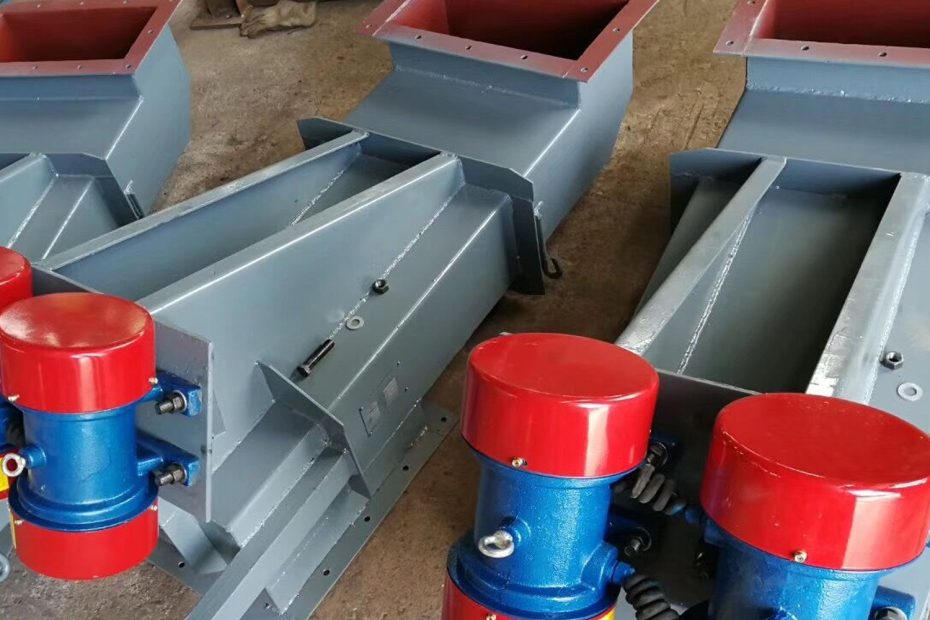In the realm of material handling and industrial processes, motor vibrating feeders play a pivotal role in facilitating the seamless flow of materials.
Motor vibrating feeders are ingenious devices designed to transport bulk materials efficiently. At their core, these feeders utilize the power of vibration generated by an electric motor to propel materials forward. This vibratory motion ensures a constant and controlled flow, making them indispensable in various industries, from mining to pharmaceuticals.
Functionality Of Motor Vibrating Feeders
- Vibration Mechanism: The heart of a motor vibrating feeder lies in its vibration mechanism. An electric motor, typically equipped with an eccentric weight, imparts vibratory motion to the feeder. This vibration moves the material along the trough, preventing clogs and ensuring a steady, controlled flow.
- Material Adaptability: One of the notable features of motor vibrating feeders is their adaptability to a wide range of materials. Whether it’s abrasive minerals or fragile pharmaceutical powders, the vibratory motion can be fine-tuned to accommodate the specific characteristics of the handled material.
Top 3 Installation Requirements For Motor Vibrating Feeders
- Mounting Stability: The foundation on which a motor vibrating feeder is mounted is crucial for its stability. A stable base not only ensures smooth operation but also minimizes vibrations transmitted to surrounding structures. This is particularly important in settings where excessive vibrations may cause disruptions.
- Trough Alignment: The alignment of the trough is a critical installation requirement. A misaligned trough can lead to uneven material flow, affecting the efficiency of the feeder. Precision in trough alignment guarantees that materials are conveyed uniformly along the intended path.
- Power Supply: A consistent and reliable power supply is paramount for the seamless operation of motor vibrating feeders. Voltage fluctuations can impact performance and lead to premature wear. Installing voltage stabilizers and surge protectors safeguards the feeder and ensures a continuous material flow.
| Installation Requirement | Importance | Solution |
|---|---|---|
| Mounting Stability | Ensures smooth operation | Use a stable foundation, consider anti-vibration mounts |
| Trough Alignment | Guarantees uniform flow | Employ precision alignment techniques, check regularly |
| Power Supply | Essential for operation | Install voltage stabilizers and surge protectors |
Safety Solutions Of Motor Vibrating Feeders
- Material Segregation : In some cases, certain materials may segregate during the feeding process. Adjusting the vibration frequency and amplitude can help mitigate this challenge, ensuring a homogeneous flow of materials.
- Wear and Tear : Continuous operation can lead to wear on the feeder components. Regular maintenance, including lubrication and inspection, is vital to identify and address potential issues before they impact performance.
- Guarding : Motor vibrating feeders can pose safety risks if not properly guarded. Installing robust guards around moving parts minimizes the risk of accidents and ensures a safe working environment.
- Emergency Stop Mechanism : A reliable emergency stop mechanism is a non-negotiable safety feature. In the event of a malfunction or emergency, this mechanism provides a quick and effective way to halt the operation and prevent potential hazards.
Conclusion
In the symphony of material handling, motor vibrating feeders emerge as virtuoso performers, orchestrating the seamless flow of diverse materials. Understanding their functionality and adhering to precise installation requirements ensures not only optimal performance but also a safer and more efficient industrial landscape. As we look to the future, the integration of advanced technologies will likely elevate these feeders to new heights, further solidifying their place in the core of industrial processes.
